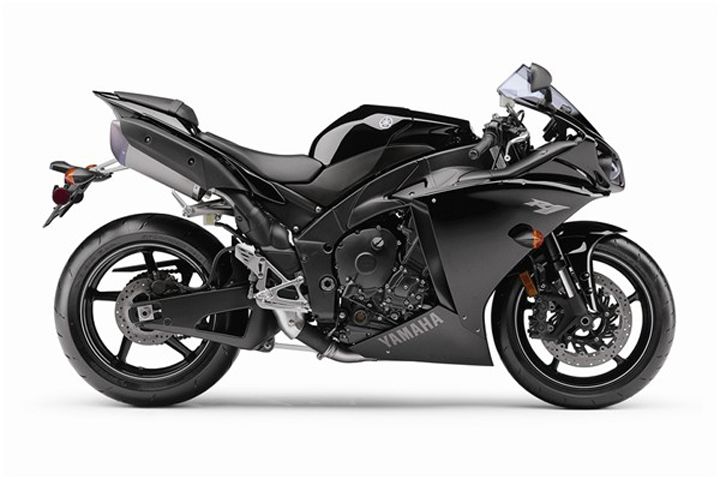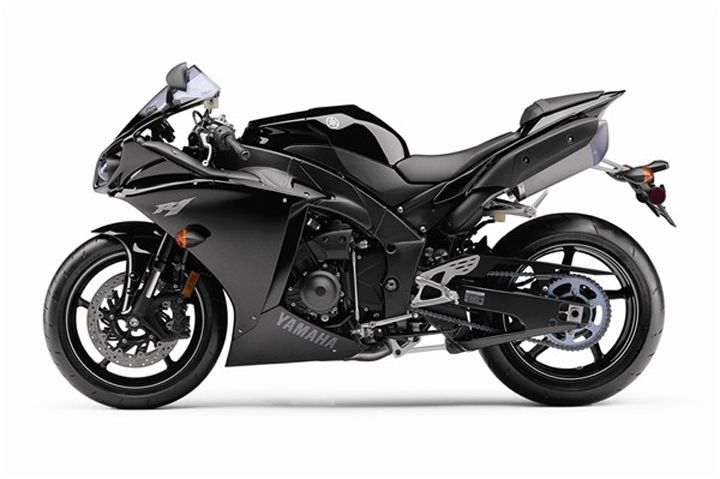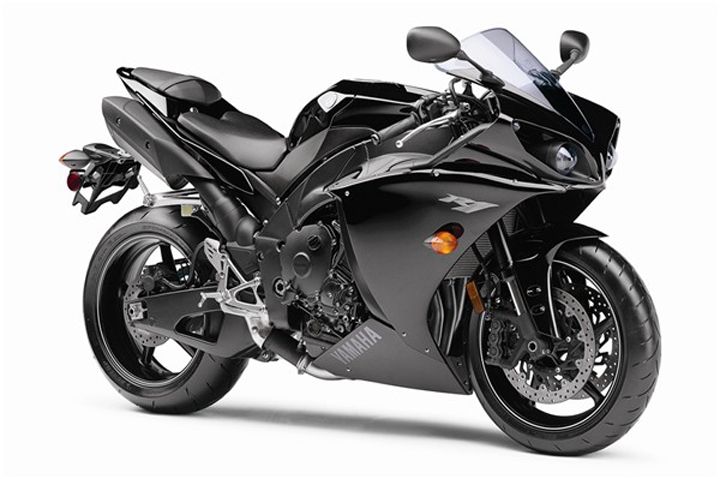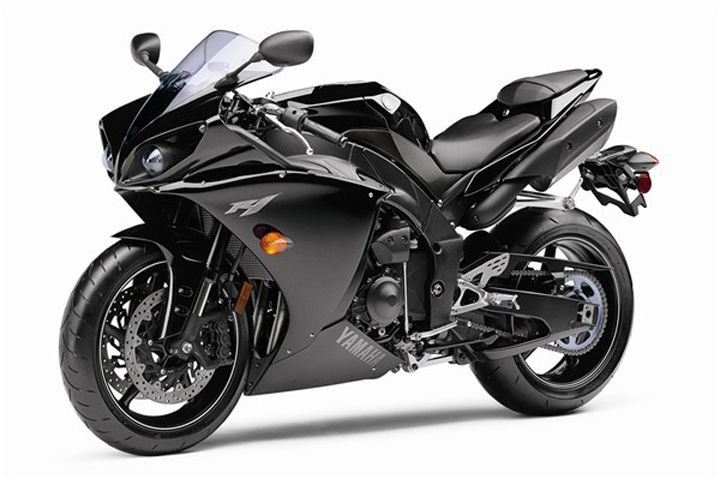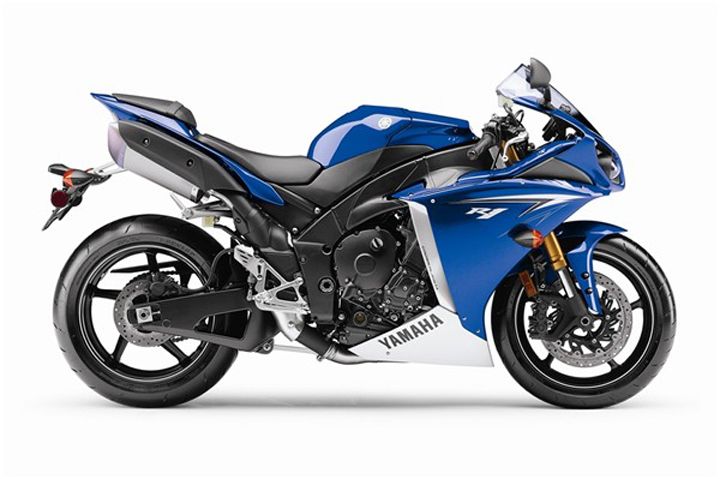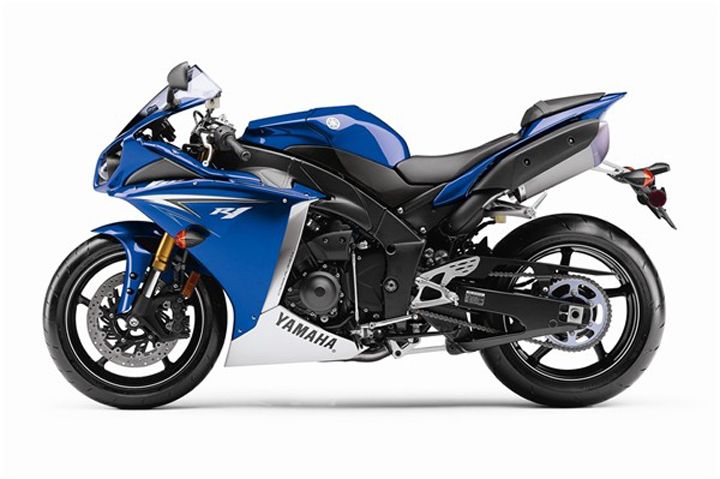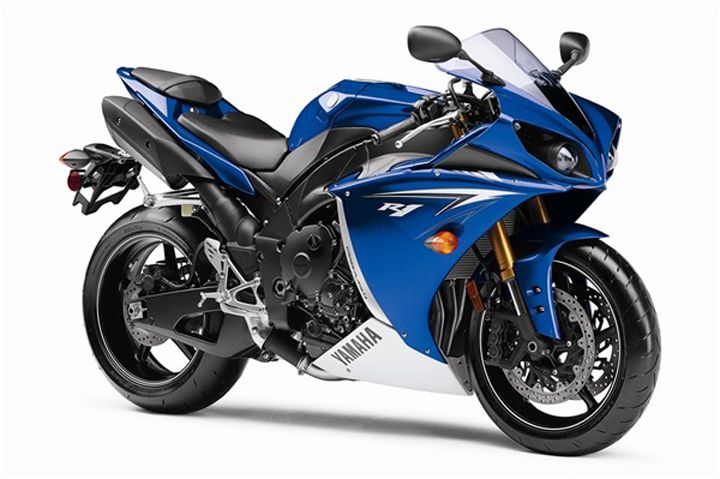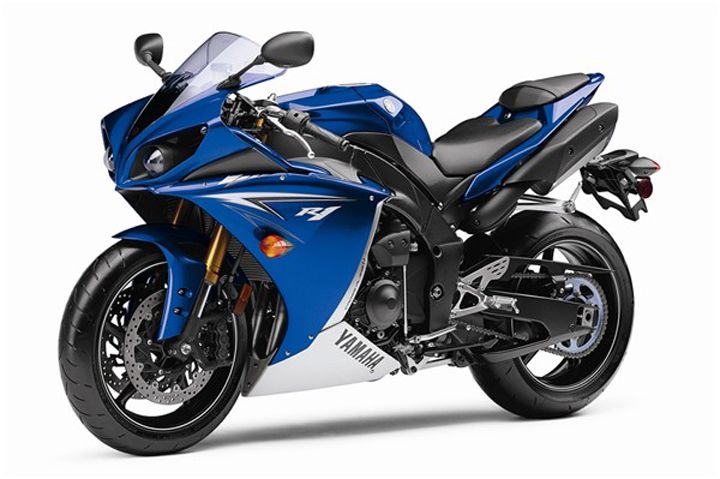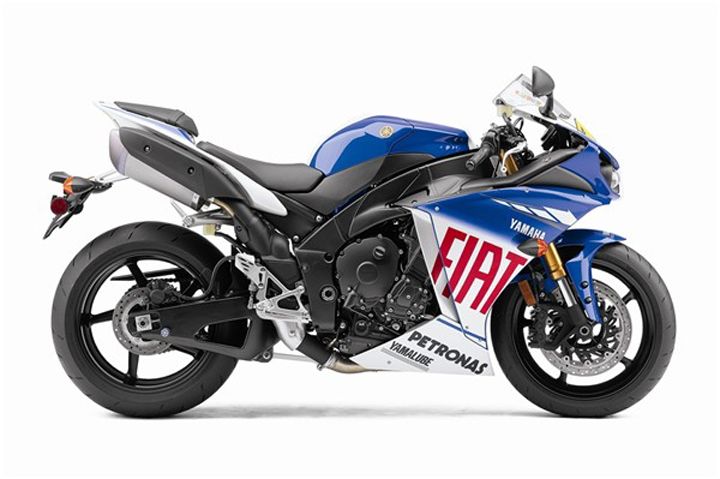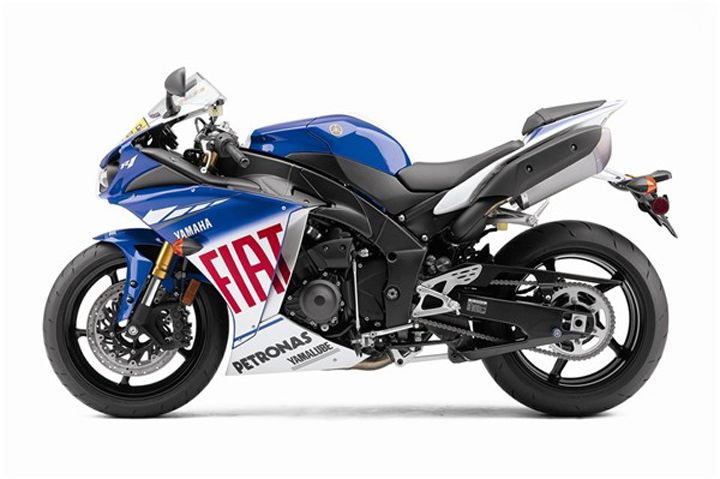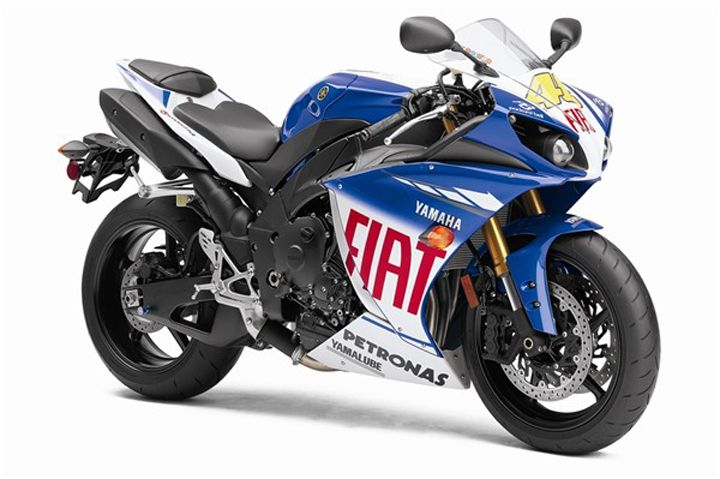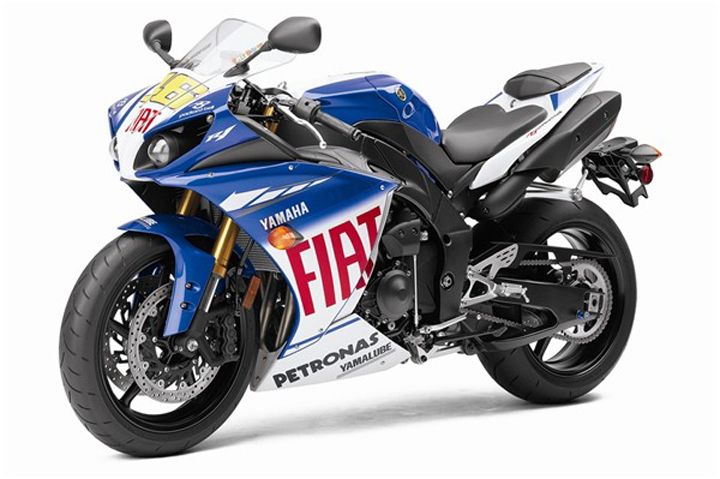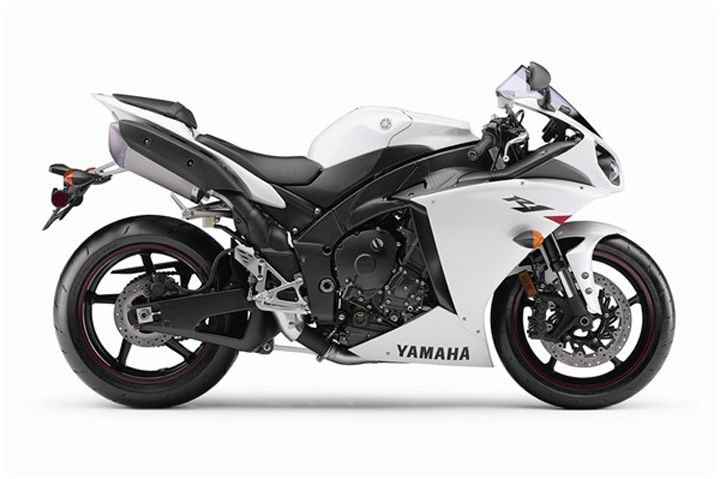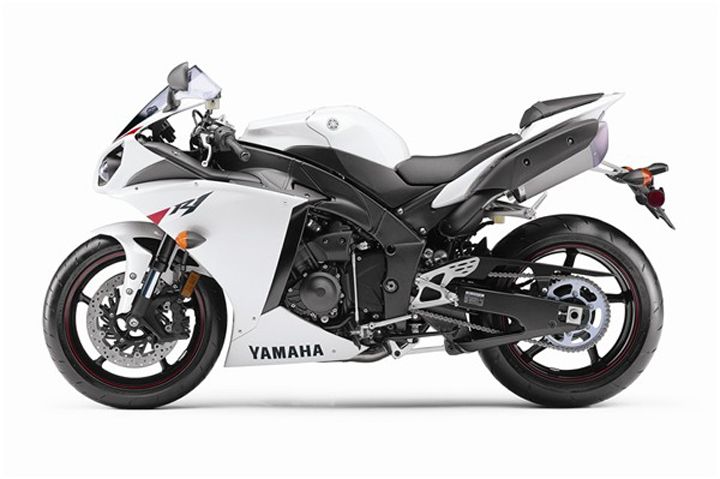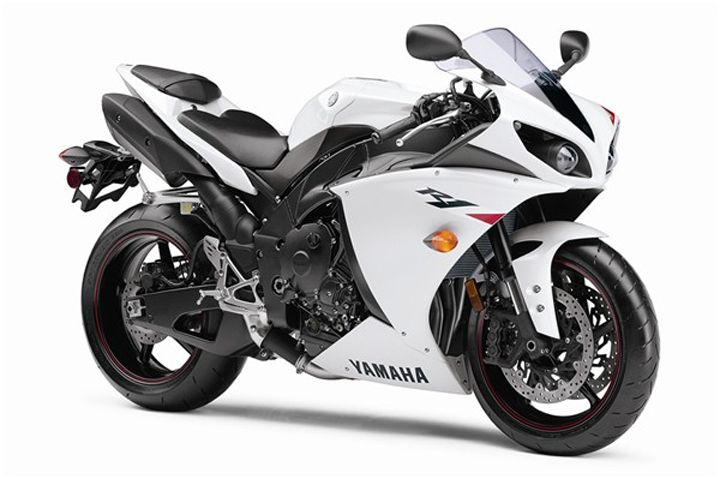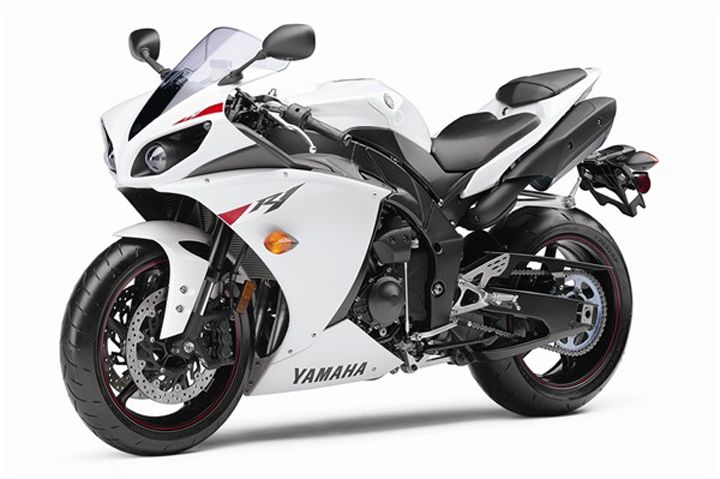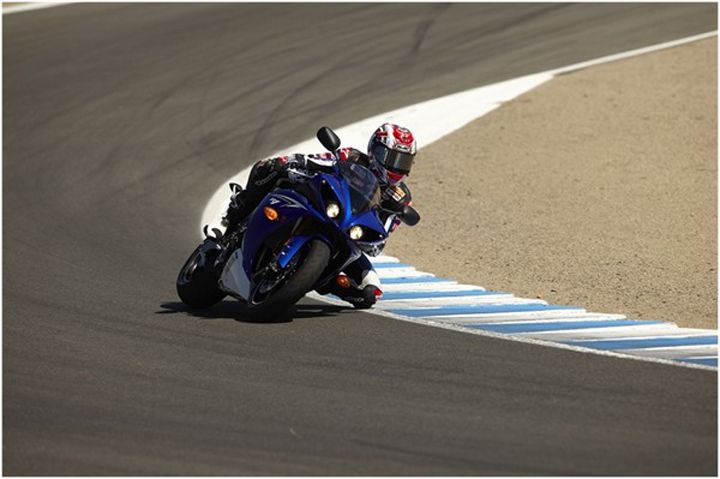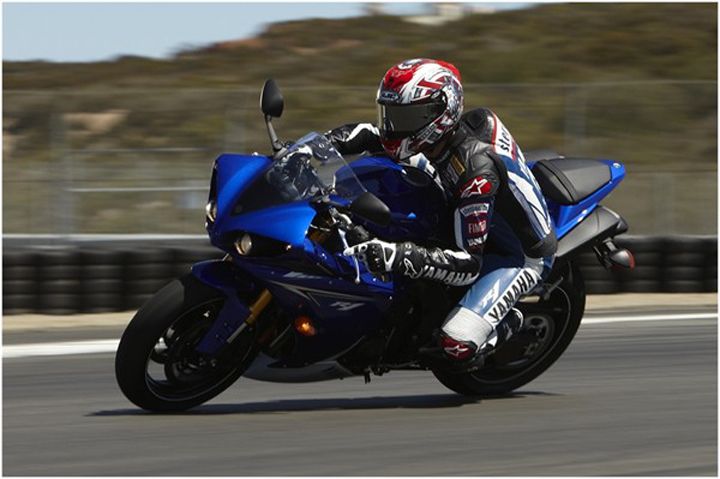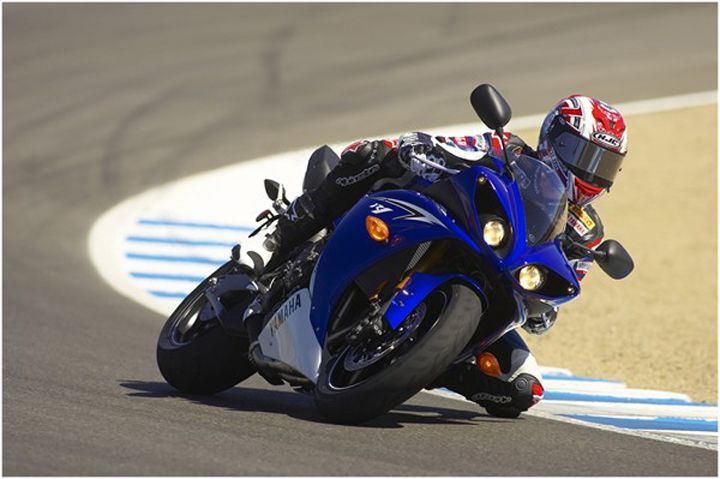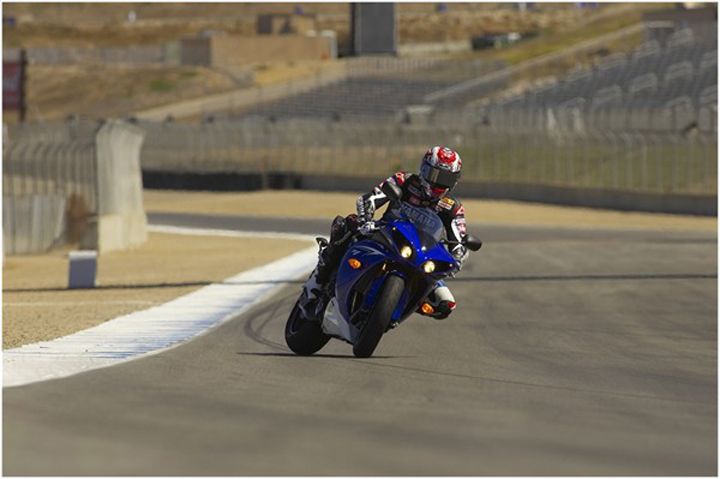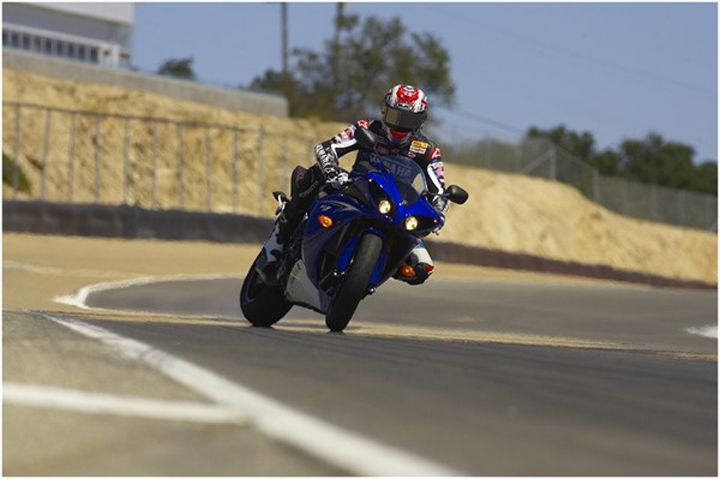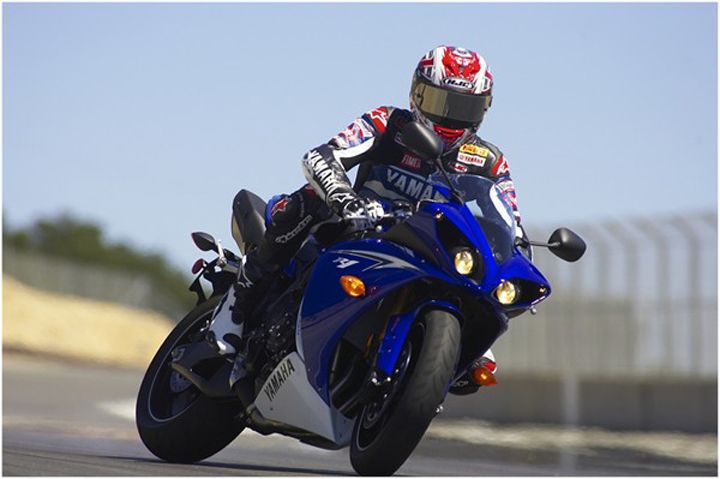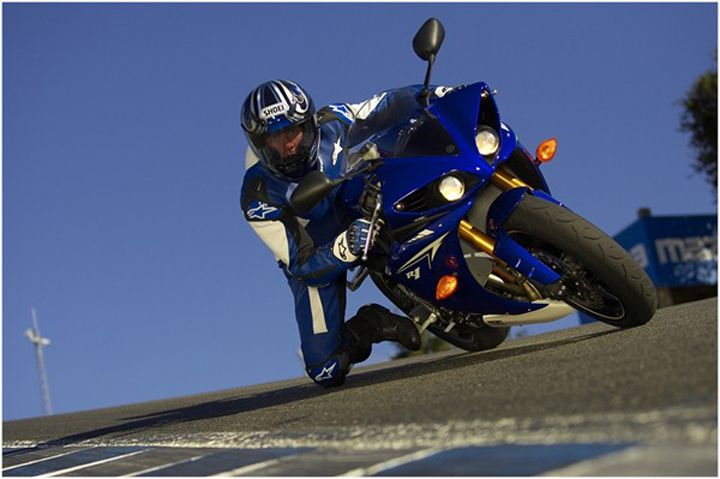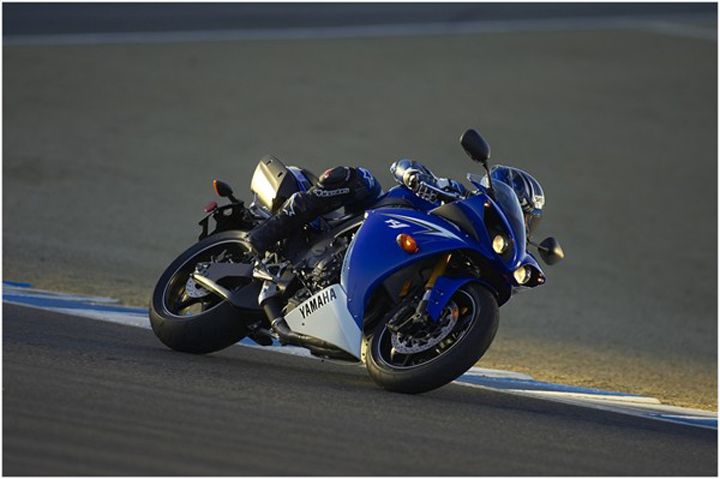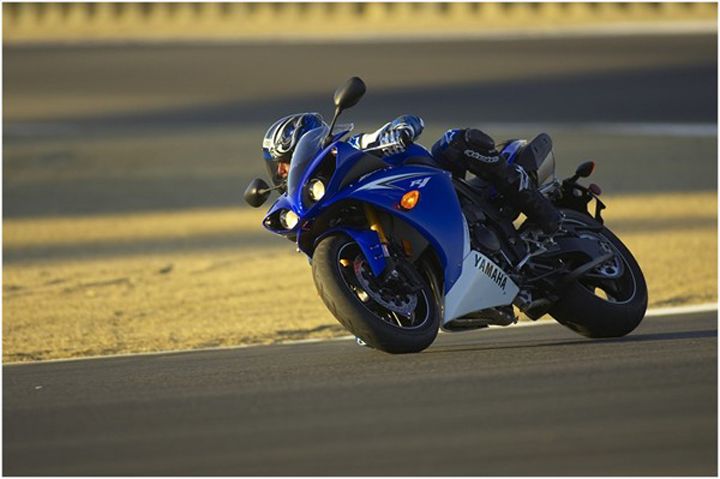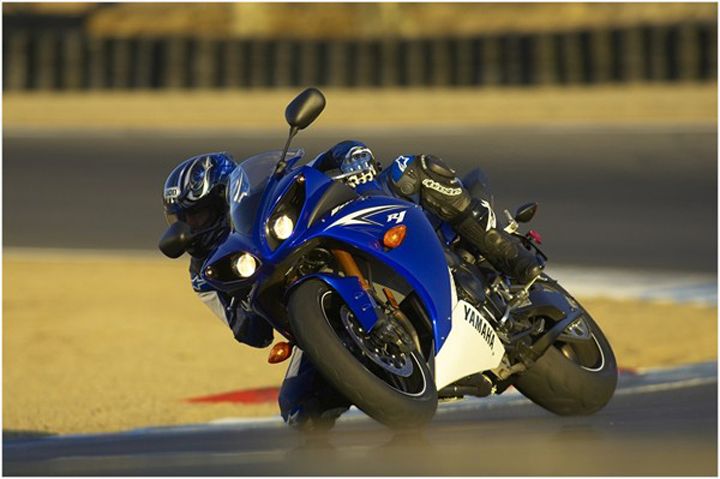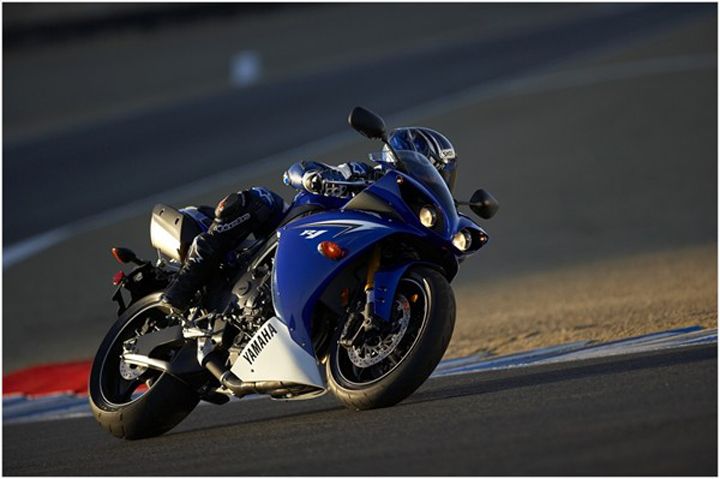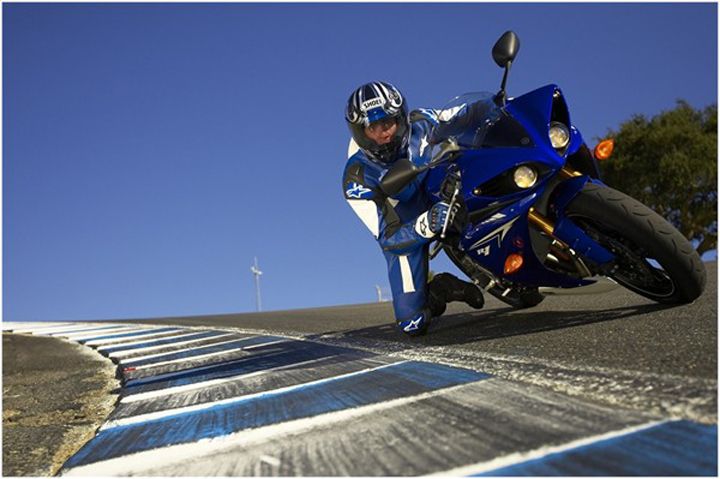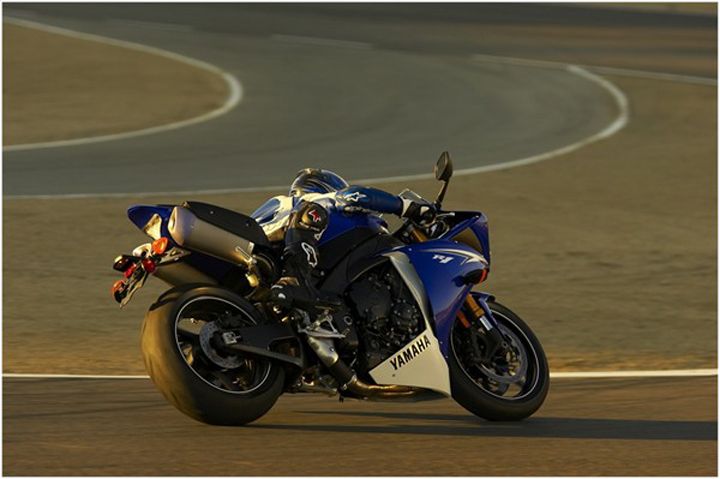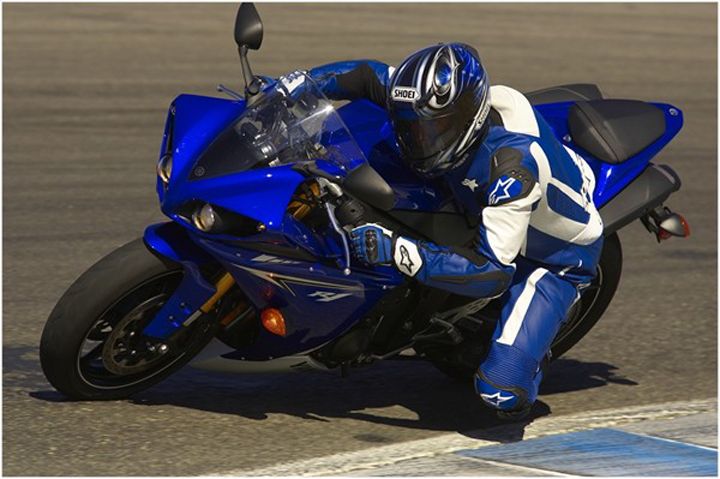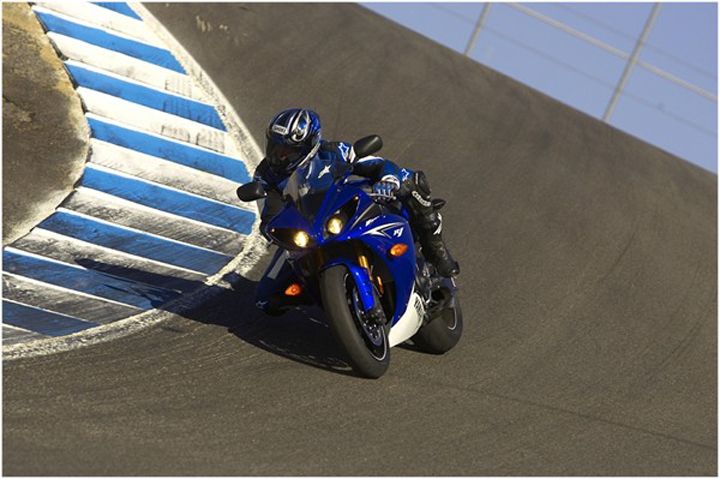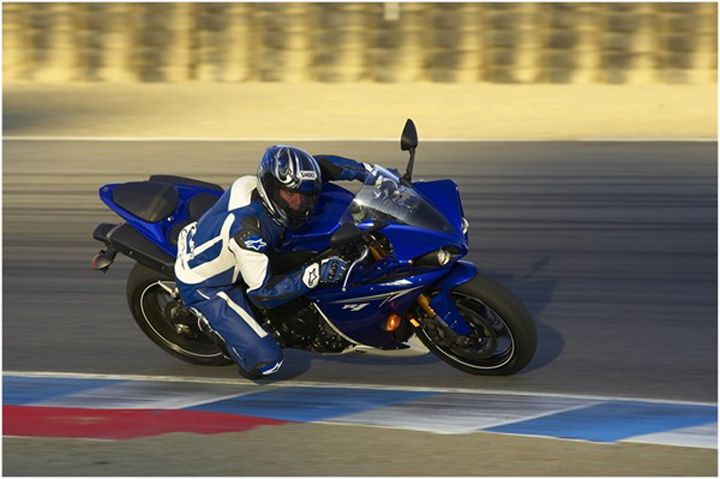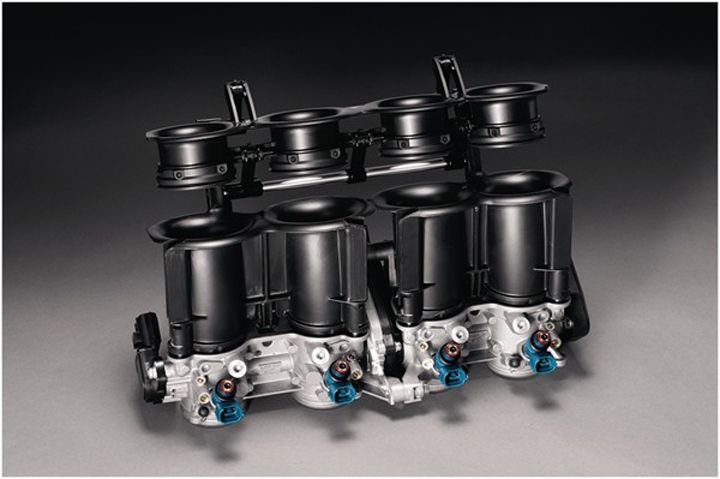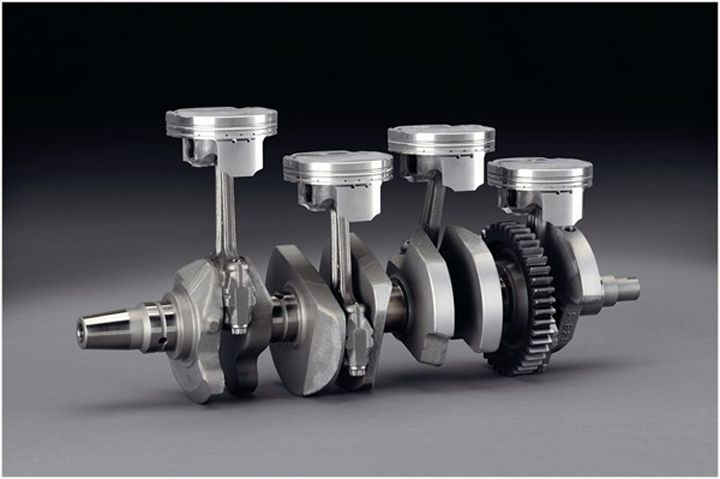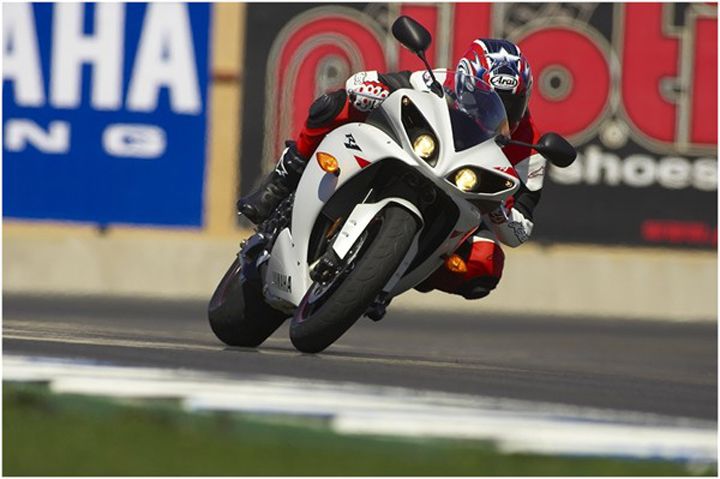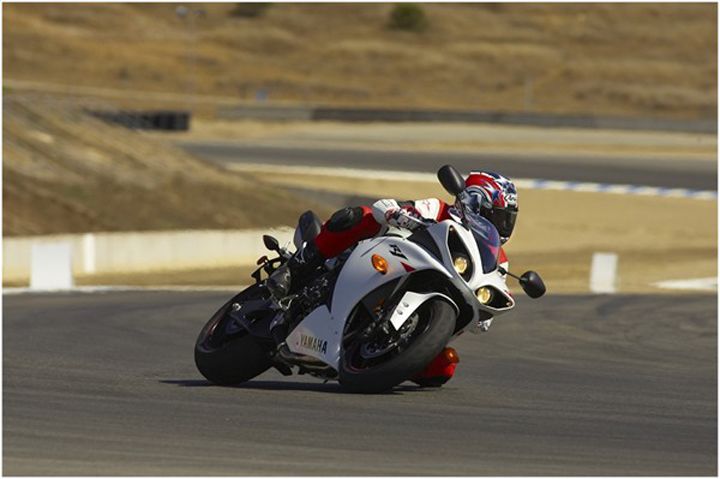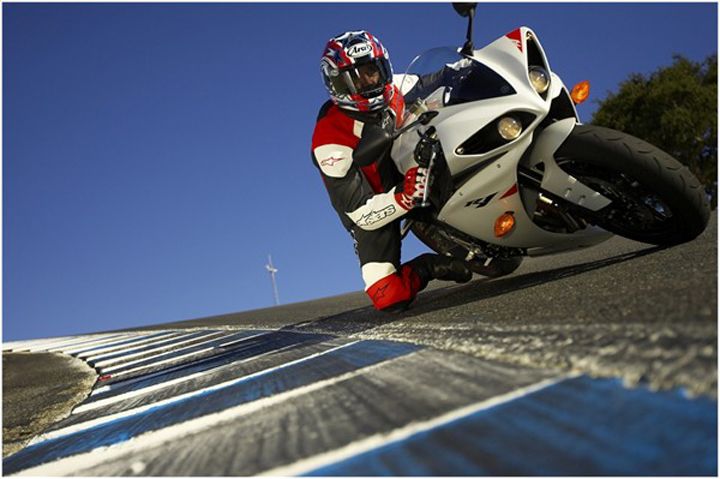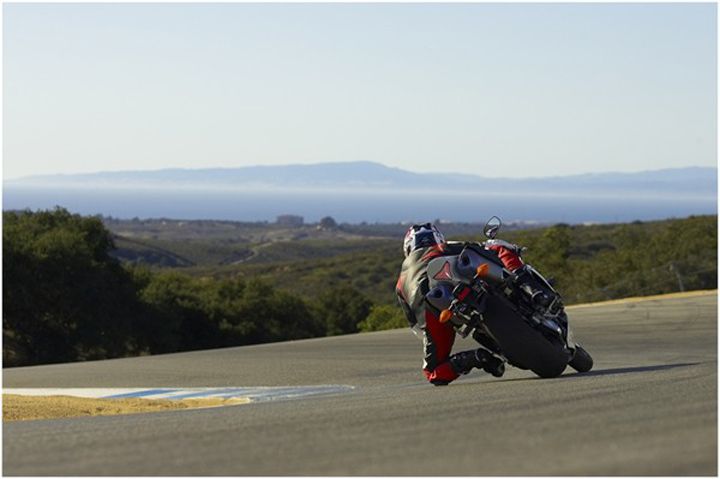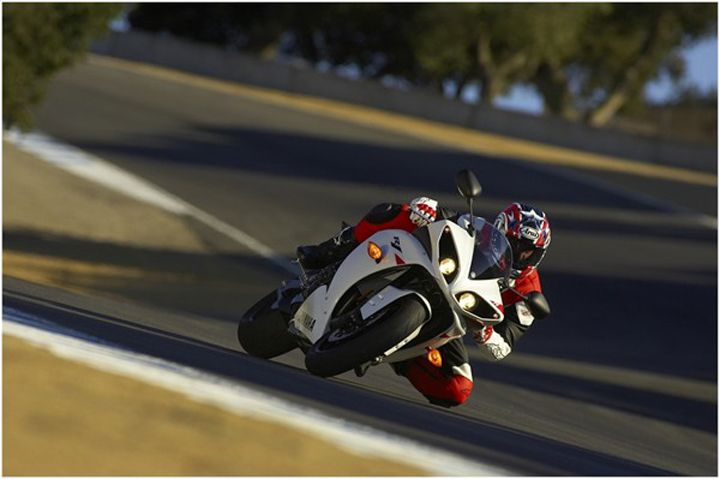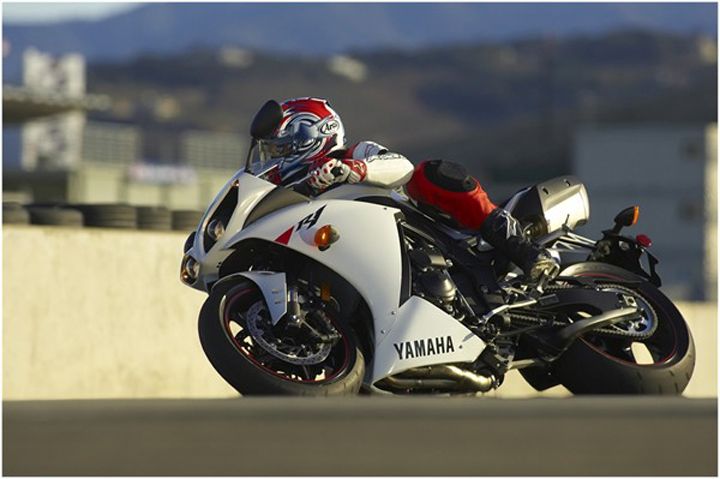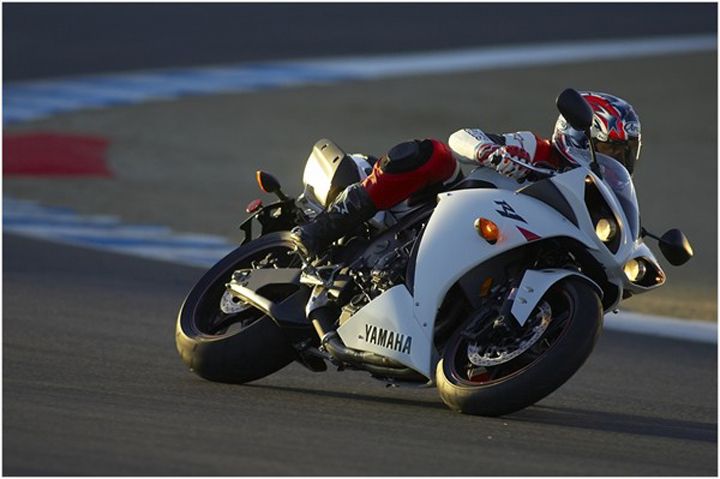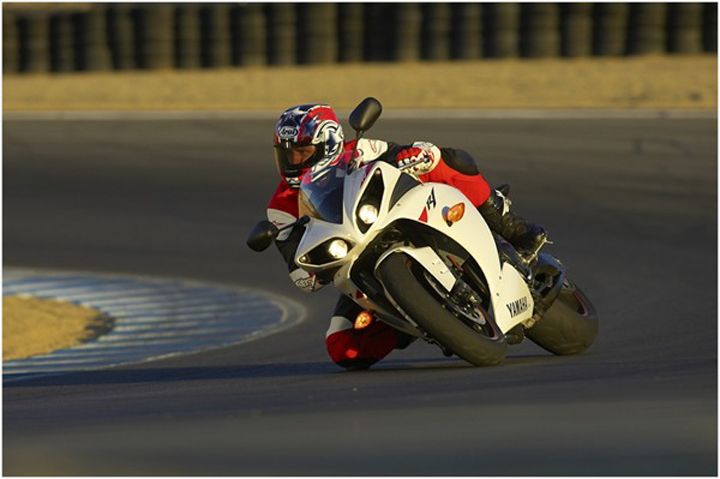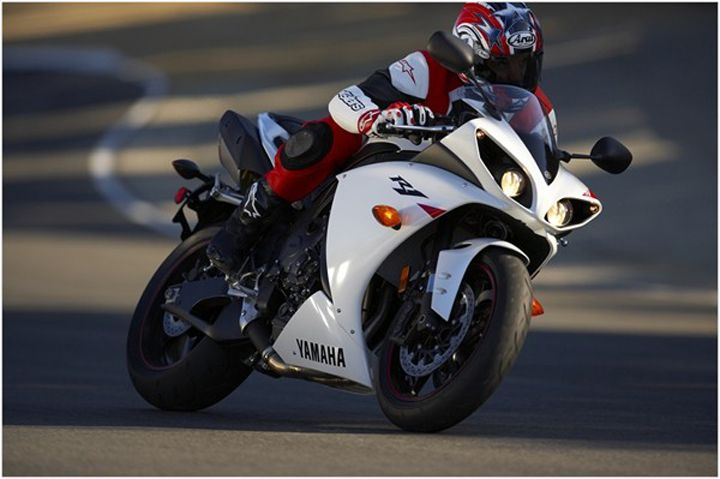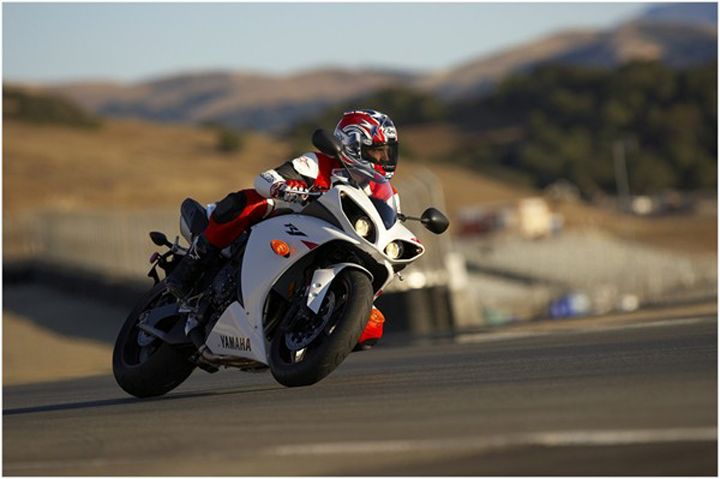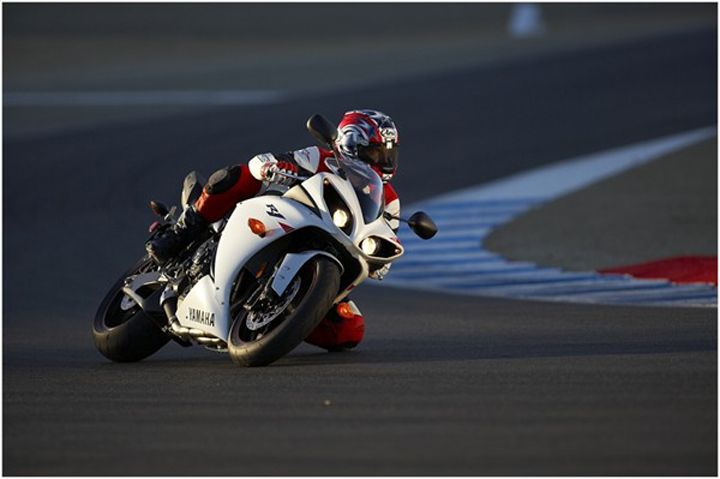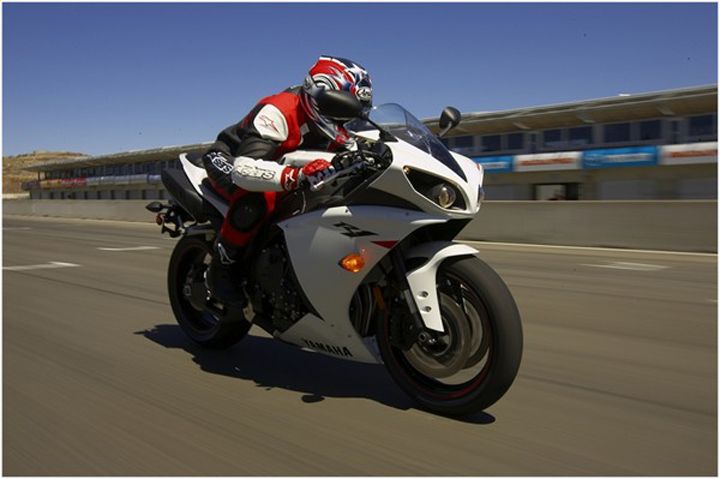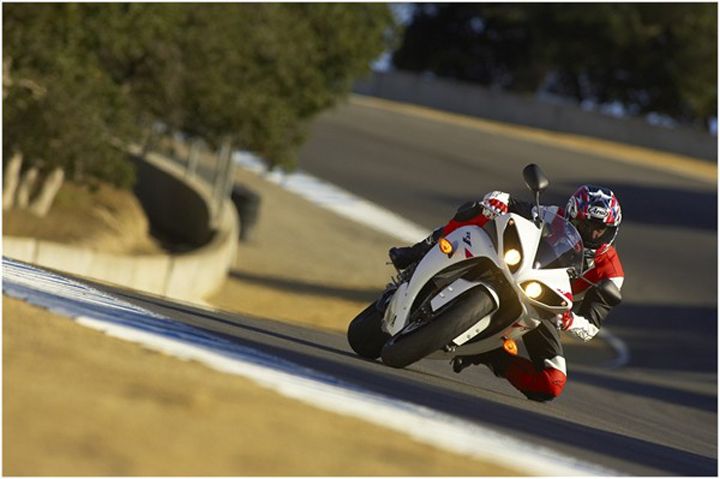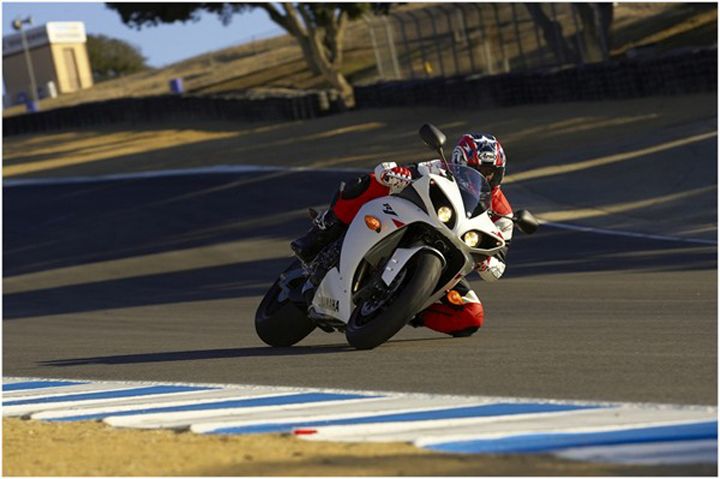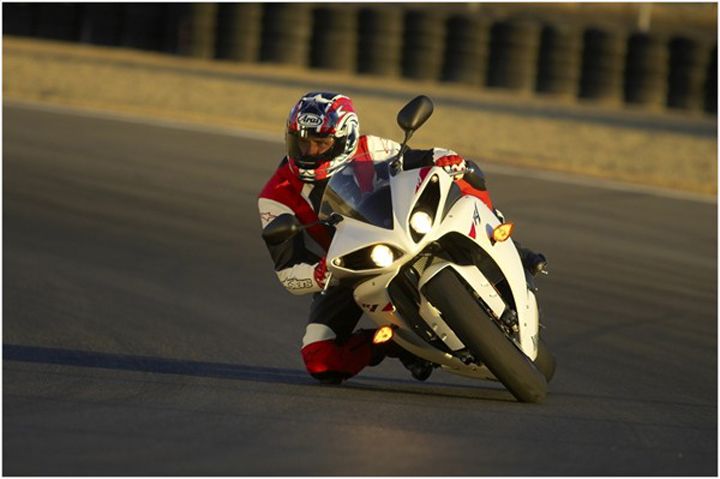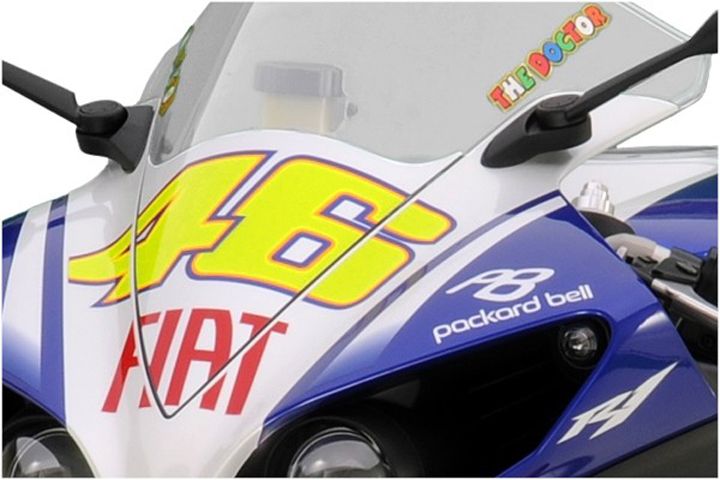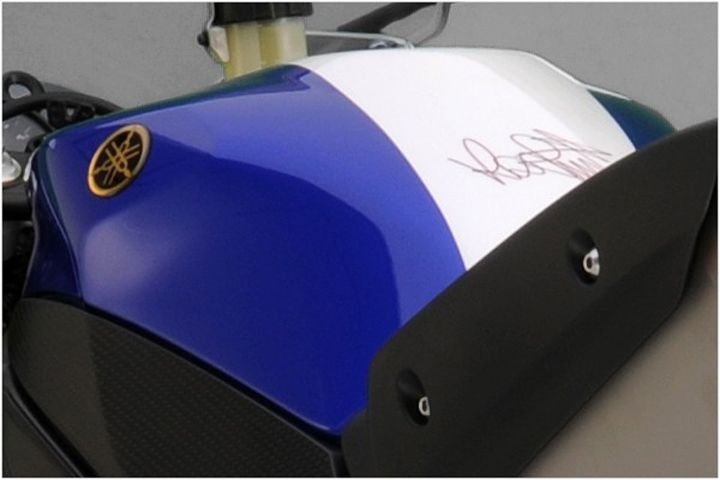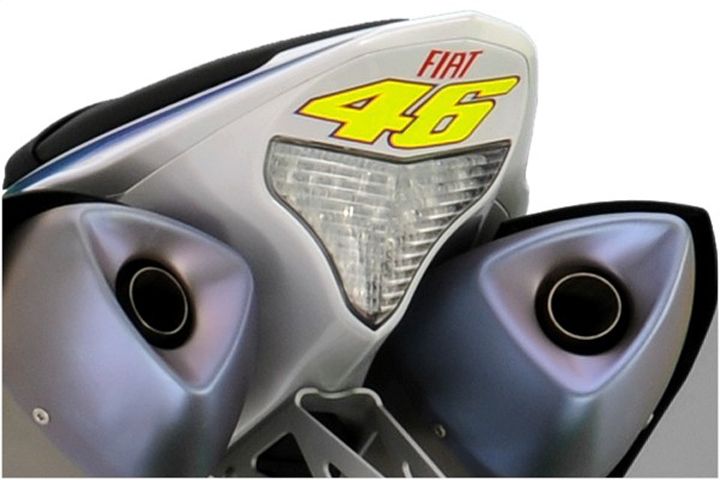Yamaha’s 2010 motorcycle lineup includes their unchanged MotoGP-derived YZF-R1 and a Limited Edition YZF-R1 Valentino Rossi replica. This last comes in an exciting Valentino Rossi/Fiat Yamaha livery with the number "46" and "The Doctor" logos, as well as with the MotoGP star’s signature on the fuel tank.
Valentino Rossi added the 2009 MotoGP Championship to his long list of wins and this Limited Edition bike is a tribute to the Fiat Yamaha Team rider. The race replica bike is now available at a starting MSRP of $14,500. Those who satisfy with the standard model, which is available in Raven, Pearl White and Team Yamaha Blue/White, will be happy to find that the bike has an MSRP of $13,290. Hit the jump to see what Yamaha and the motorcycle press have to say about the YZF-R1.
2010 Yamaha YZF-R1 / LE
- Make: Array
- Model: 2010 Yamaha YZF-R1 / LE
- Engine/Motor: liquid-cooled 4-cylinder DOHC 16 valves (titanium intake valves)
- Horsepower: 180 HP @12,500 rpm
- Torque: 11.8 kg-m @ 10,000 rpm
- Transmission: 6-speed w/multiplate slipper clutch
- [do not use] Vehicle Model: Array
Press Release
Cypress, Calif. – Don’t say we didn’t warn you to forget everything you ever knew about the supersport liter class. Moto journalists and consumers agree once you hear the growl of the YZF-R1, it is clear that this bike is unlike anything before. Winning on the World Superbike racing circuit and in the motorcycle press, the R1 was chosen as the 2009 Motorcycle of the Year by Motorcyclist Magazine for its MotoGP®- inspired engine and chassis technology and its luxurious fit and finish.
New for 2010, the R1 will be offered in an LE Limited Edition complete with Valentino Rossi/Fiat Yamaha livery including the number “46” and “The Doctor” logos. Each LE will also contain a replica of Valentino’s signature on the fuel tank.
It’s all about power – delivery of power, to be exact. That’s because the R1 is the world’s first production motorcycle with a crossplane crankshaft. Originally pioneered in MotoGP racing with the M1, crossplane technology puts each crank pin 90 degrees from the next, with an uneven firing interval of 270-180-90-180 degrees. The result is incredibly smooth, roll-on power delivery with outrageous amounts of torque for a rush like you’ve never experienced before.
The unique shape of the crossplane crank smoothes out fluctuations in inertial crankshaft torque to provide very linear power delivery as the engine’s combustion torque builds, giving the rider more linear throttle response with awesome power and traction exiting corners. Not just new, the R1’s new crossplane crank engine represents a complete paradigm shift.
To make the crossplane crank viable an advanced ECU individually maps each cylinder’s ignition and fuel injection timing. This powerful electronics package also controls Yamaha Chip Control Intake and Chip Control Throttle (YCC-I, YCC-T).
The inclusion of D-MODE variable throttle control function enables the rider to adjust performance characteristics to match a variety of riding conditions. In addition to standard mode mapped for optimum performance, the rider can select from A mode for sportier response in low to mid-speed range, and B mode for somewhat less sharp response for riding situations that require especially sensitive throttle operation. These 3 different maps at the push of a button allow the rider to choose the optimum power character for their riding situation.
This revolutionary new engine is housed in an equally advanced chassis. Control filled die-cast frame rails balance high vertical rigidity with relatively low lateral rigidity for increased high speed stability while improving handling, especially while leaned over during corner exit. A control filled die-cast magnesium sub frame cuts weight far from the center of balance and contributes to concentration of mass.
Visually the new R1 breaks new ground leading with twin projector beam headlights concentrated near newly placed forced air intake ducts. The sculpted body work features inner and outer shells controlling airflow around the bike at high speeds and forcing more cool air to the radiator and engine bay while eliminating the need for hot-air vents usually located at the sides of the radiator.
More than the just the next-generation of supersport; the YZF-R1 represents a major breakthrough in supersport technology and performance.
The 2010 R1 will be available in dealerships nationwide beginning in September 2009 with a starting MSRP of $13,290 and available in Raven, Pearl White and Team Yamaha Blue/White.
The R1 LE will be available in January 2010 with a starting MSRP of $14,500 and available in Fiat Yamaha Team graphics.
Full information on all Yamaha models can be found at http://www.yamaha-motor.com.
-----
Press Reviews
"Peak power remains the same as before, but torque is up by 2ftlb. Power: 179bhp@12,500rpm. Torque: 85ftlb@10,000rpm. The most noticeable difference compared to previous R1s is how quickly it accelerates out of corners." MCN
"The first thing I noticed after starting the R1 was the menacing growl being emitted from the mufflers. This definitely doesn't sound like any R1 I've ever heard before. As I pulled out of the garage, I could feel the new engine eagerly wanting to accelerate from way down in the revs. This is definitely a new sensation, previous models needed to be revved a bit to begin to produce usable power." – motorcycledaily
"Hitting you smack in the face like a drunken guy in a bar whose girlfriend you accidentally just hit on, the throttle response is unlike anything I have ever felt. So instantaneous and so precise, it caught me off guard during our first session at the 12-turn Eastern Creek Raceway." – motorcycle-usa
"The crossplane-crank engine is incredibly smooth at any situation other than the aforementioned lower-rpm lugging scenario. There's no buildup of high-frequency vibration as the rpms rise, and the engine's silky demeanor and gruff exhaust note can be deceptive at times, making you think that you're turning lower rpm than you really are…" – sportrider
"In terms of street use, the R1 now offers a slightly more hospitable riding position. Its handlebars are 10mm closer to the rider, and the seat is placed 8mm forward. Footpegs are situated 10mm forward, and they are now repositionable 15mm up and 3mm rearward. Only truly fast riders will need the pegs in their more aggressive position." – motorcycle
"As the day wore on and I got much more assertive with the brakes and steering inputs, I became more aware of the 18 additional pounds the new 454-pound-net R1 is packing. The engine—with its beefier crankshaft, addition of a counterbalancer shaft and strengthened cases—is said to be a primary source of the weight gain." – cycleworld
Conclusion
As much as Yamaha would brag about their latest generation liter bike, we’ve come to find that the motorcycle press confirms them and for good reason. But honestly, the YZF-R1 is pretty much at the same level as in 2009 and with the competition stiffening up – just check out 2010’s best liter bike, the BMW S1000RR – new solutions must be found to be on top of the game.
-----
SPECIFICATIONS
Engine and Transmission
- Type: 998cc, liquid-cooled 4-cylinder DOHC 16 valves (titanium intake valves)
- Bore x Stroke: 78.0mm X 52.2mm
- Compression Ratio: 12.7:1
- Fuel Delivery: Fuel Injection with YCC-T and YCC-I
- Ignition: TCI: Transistor Controlled Ignition
- Transmission: 6-speed w/multiplate slipper clutch
- Primary Reduction Ratio 65/43 (1.512)
- Secondary Reduction Ratio 47/17 (2.765)
- Gear Ratio - 1st Gear 38/15 (2.533)
- Gear Ratio - 2nd Gear 33/16 (2.063)
- Gear Ratio - 3rd Gear 37/21 (1.762)
- Gear Ratio - 4th Gear 35/23 (1.522)
- Gear Ratio - 5th Gear 30/22 (1.364)
- Gear Ratio - 6th Gear 33/26 (1.269)
- Final Drive: #530 O-ring chain
Chassis and Dimensions
- Suspension/Front: 43mm inverted fork; fully adjustable, 4.7-in travel
- Suspension/Rear: Single shock w/piggyback reservoir; 4-way adjustable, 4.7-in travel
- Brakes/Front: Dual 310mm disc; radial-mount forged 6-piston calipers
- Brakes/Rear: 220mm disc; single-piston caliper
- Tires/Front: 120/70-ZR17
- Tires/Rear: 190/55ZR17
- Length: 81.5 in
- Width: 28.1 in
- Height: 44.5 in
- Seat Height: 32.8 in
- Wheelbase: 55.7 in
- Rake (Caster Angle): 24.0°
- Trail: 4.0 in
- Fuel Capacity: 4.8 gal
- Dry Weight: 454 lb
Other
- Warranty: 1 Year (Limited Factory Warranty)
Features & Benefits
New for 2010:
- The YZF-R1 LE is a limited edition Valentino Rossi / Fiat Yamaha replica complete with the number “46” and “The Doctor” logos, including a replica of Valentino Rossi’s signature on the fuel tank.
Key Features:
- The YZF-R1 garnered the prestigious award as the 2009 Motorcycle of the Year from Motorcyclist Magazine. The YZF-R1 was chosen for its MotoGP®-inspired engine and chassis technology, and for its luxurious fit and finish.
- Back for 2010, the YZF-R1 is the only production motorcycle with a crossplane crankshaft. Crossplane technology, first pioneered in MotoGP® racing with the M1, puts each piston 90° from the next, with an uneven firing interval of 270° - 180°- 90°- 180°. This uneven order does an amazing thing… it actually lets power build more smoothly. That means smooth roll-on delivery out of the corners, with outstanding tractability, followed by very strong high rpm power. It’s a feeling that’s simply unmatched, like having two engines in one: the low-rpm torquey feel of a twin with the raw, high rpm power of an inline four. This breakthrough technology on the YZF-R1 represents a paradigm shift in both technology and performance.
- This R1 keeps all the technological superiorities developed for its predecessor: YCC-T™ (Yamaha Chip Controlled Throttle) is MotoGP® inspired fly-by-wire technology used to deliver instant throttle response. YCC-I® is Yamaha Chip Controlled Intake which is a variable intake system that broadens the spread of power. The fuel injection system provides optimum air/fuel mixtures for maximum power and smooth throttle response.
- The R1 features Yamaha D-MODE (or drive mode) with rider-selectable throttle control maps to program YCC-T performance characteristics for riding conditions. The standard map is designed for optimum overall performance. The “A” mode lets the rider enjoy sportier engine response in the low- to mid-speed range, and the “B” mode offers response that is somewhat less sharp for riding situations that require especially sensitive throttle operation. Switching maps is as easy as pushing a button on the handlebar switch.
- In keeping with this machine’s exceptional cornering ability and crisp handling, the aluminum frame has been designed to offer exceptional rigidity balance. The rear frame is lightweight Controlled-Fill die-cast magnesium, contributing the optimum mass centralization. Suspension includes SOQI front forks which use one of the tricks developed for our winning MotoGP® bikes: independent damping. The left fork handles compression damping and the right side handles the rebound damping. And the rear shock adopts bottom linkage for optimum suspension characteristics.
- The bodywork does more than add break-away-from-the-crowd styling with its more serious, less busy look. The side fairing is smooth for a sleek appearance. And, instead of the usual four-bulb headlight design, the R1 has only two projector-type bulbs mounted closer to the nose of the bike. This positions ram air ducts closer in for a more compact, smooth look. In addition, the rounded lenses are unique to the supersport industry.
Engine:
- Crossplane crankshaft technology proven in victory after victory on MotoGP® machines provides a high-tech uneven firing interval. Unlike typical inline-four engine design, where the two outer and two inner pistons move together in pairs with 180° intervals, the crossplane crankshaft has each connecting rod 90° with a unique firing order of 270° – 180° – 90° – 180°. This overcomes the inherent fluctuations in inertial torque during each engine revolution, and the accompanying peaky torque characteristics. Instead, combustion torque continues to build, giving the rider more linear throttle response with awesome power and traction out of the corners.
- To maximize rider comfort as well as power output, the engine adopts a coupling-type balancer that rotates in the opposite direction as the crankshaft.
- This engine features forged aluminum pistons to take maximum advantage of the power characteristics. Titanium intake valves are lightweight.
- A forced-air intake system is adopted to increase intake efficiency by using the natural airflow during riding to pressurize the air in the air box. This contributes to outstanding power delivery characteristics in the high-speed range, while the design also helps to minimize intake noise.
- Slipper-type back torque-limiting clutch greatly facilitates braking/downshifting from high speed.
- The exhaust system is meticulously designed to enhance engine output while, thanks to its three-way catalyst technology, also reducing exhaust emissions. The silencer is a single expansion type, and the sound coming through from the unique crossplane crankshaft- equipped engine is unlike any other inline-four cylinder production supersport.
- This fuel-injected engine takes full advantage of YCC-T (Yamaha Chip Controlled Throttle), the MotoGP®-inspired fly-by-wire technology used to deliver instant throttle response. There’s also YCC-I, Yamaha Chip Controlled Intake, the variable intake system that broadens the spread of power. Fuel injectors have 12 holes for optimum fuel atomization that translates to the most power from every fuel charge.
- Have it your way, thanks to Yamaha D-MODE (or “Drive Mode”) variable throttle control. There are three modes that control how YCC-T responds to throttle input from the rider. The selectable “A” mode puts more emphasis on engine response in low to midrange rpm. “B” mode, on the other hand, provides less sharp response to input for riding situations that require especially sensitive throttle operation. The standard map is designed for optimum overall performance. Selecting the map you want is as easy as pressing a button on the handlebars.
Chassis/Suspension:
- The frame has a combination of uncompromising rigidity where needed along with carefully achieved flex for the precise rigidity balance this bike needs to give the rider the full benefit of its handling and engine characteristics. It is a sophisticated combination of Controlled-Fill die-cast, stamping, and gravity casting… the exact technology needed for each portion of this advanced frame.
- SOQI front forks take a page from the championship-winning design of our MotoGP® weapon, the M1. Since both forks always move together, compression damping duties can be confined to the left fork, while rebound damping is precisely handled by the right fork, reducing oil cavitation.
- The SOQI rear shock features both high and low speed compression damping plus an easy-to-use screw hydraulic adjustment for preload. This unit also adopts a pillow-ball-type joint for exceptional shock absorption, road hold feeling, and damper response. To achieve maximum performance, a bottom linkage is used to work with the rest of the chassis refinements for brilliant, crisp handling characteristics.
- Factory racers get machines tailored to their preferences. Welcome to the club. R1 has adjustable footrests, with a 15mm height and 3mm front-to-rear adjustment.
- The press-formed fuel tank has a shape developed using 3-D simulation analysis technology. The elongated shape of the tank allows it to fit neatly within the frame in a way that promotes concentration of mass.
Additional Features:
- The instrumentation includes everything a rider wants to know, including gear position.


